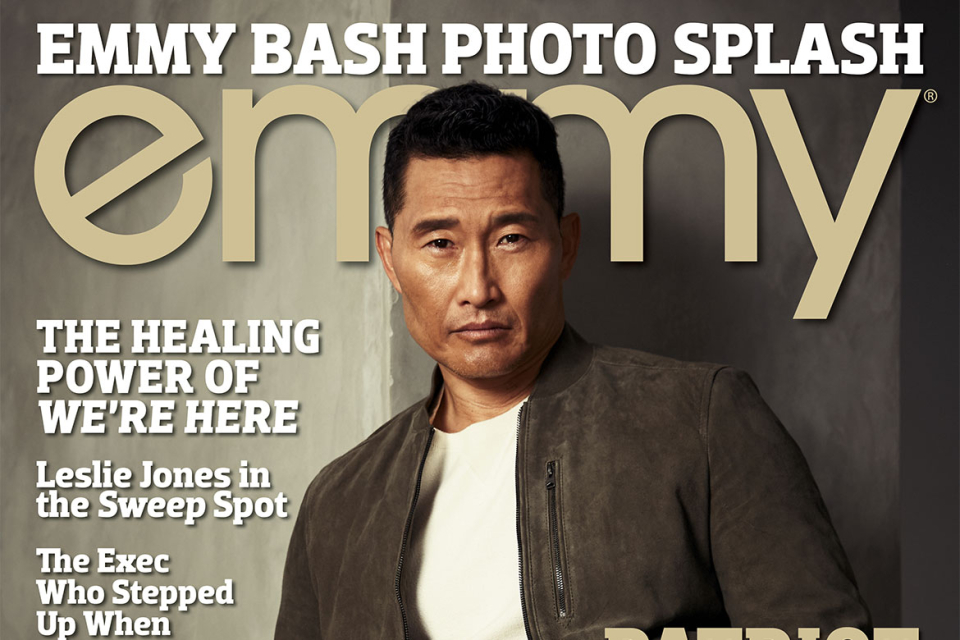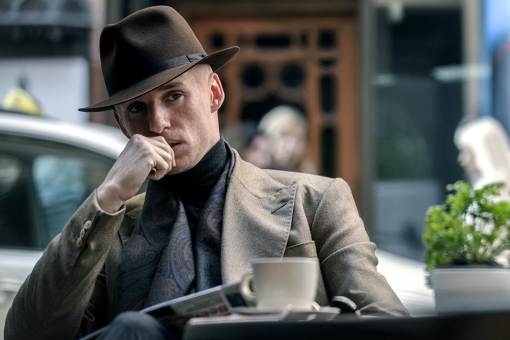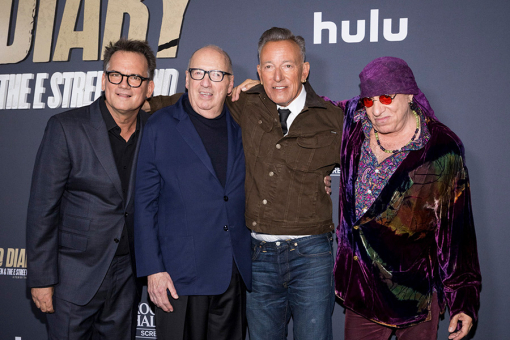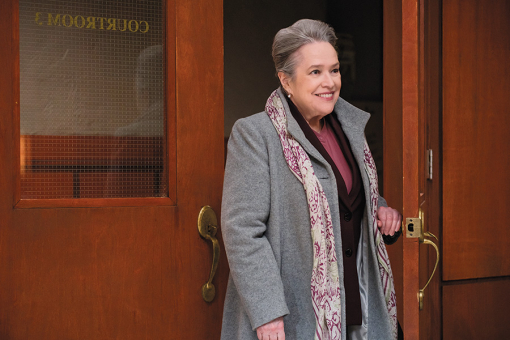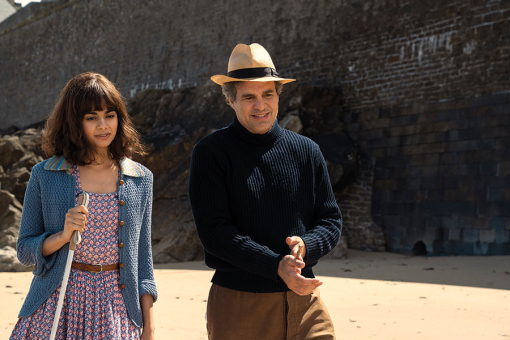The terrorist attacks of September 11 were so fresh that the rubble pile, all that remained of the twin towers, was still smoldering. and while the country was reeling and fear was palpable, another threat emerged.
Though five people were killed, 17 fell ill and countless more were too frightened to open their mail, this scare is largely forgotten. The Hot Zone: Anthrax reminds us of the worst biological attack in U.S. history, a time when this lethal powder was mailed to politicians and journalists as the FBI desperately searched for the culprit.
Told over three nights on National Geographic, beginning November 28 and streaming the next day on Hulu, the anthology series is based on science and history, but it's not a documentary. The main character, Daniel Dae Kim's Matthew Ryker, a microbiologist and FBI special agent, is a composite.
He's also, Kim says, a bit of a breakthrough.
"The fact that we can see an American who looks like me, and that we can conceive of that person as a hero and a patriot, expanding the notion of who can be defined as American, that is something I'm very interested in doing," Kim says.
"I've done my best to avoid stereotypes throughout my career," he continues. "If I know there's a role that breaks stereotype or turns a stereotype on its head, I may take it just because of the statement it's making. It's definitely one of the top priorities when I consider a role — what the portrayal is, what it's saying about representation."
Kim, whose family emigrated from Korea when he was a baby, is very much an American. Yet as an Asian, he was often sidelined, made to feel the other. He continues to work for equity for Asians and spoke before a House Judiciary Committee about hate crimes. And he famously walked away from Hawaii Five-0 when CBS did not raise his salary (already a significant cut from his Lost days) to match the pay of his white costars.
He's delighted to play an intelligent, brave, uncompromised character in The Hot Zone: Anthrax, and the project marks the first time in Kim's 31-year career that he was first on the call sheet.
"There are some who might say, 'Well, you've been working for 31 years in this industry, it's about damn time,'" he observes. "At the same time, I don't feel like anyone's entitled to that. There are many actors who are much more talented than I am, have worked in this business much longer than I have, who've never had that opportunity. I just feel fortunate that in my lifetime, I've gotten that chance."
With so many FBI agents working on the anthrax case over seven years, it made sense to create one composite character to represent them, say Hot Zone's showrunner–executive producers Kelly Souders and Brian Peterson.
"It became clear to us right up front that we needed someone who could take us through the whole gamut and also give us leeway to tell a personal story that fit the time and what people were going through, especially anyone in law enforcement and anywhere around New York," Souders explains.
The series captures the pervasive angst of the time and the constant pressure on the FBI to identify suspects and make arrests. Some of the pressure came from a powerful network anchor, NBC's Tom Brokaw, who received an anthrax-laced letter two weeks after the al-Qaeda attacks. Harry Hamlin nails the journalist's delivery, while Dylan Baker plays Ryker's boss, FBI lifer Ed Copak, who is hellbent on finding the culprit.
Built into Ryker's backstory is that Flight 77 flew right over him just before it crashed into the Pentagon on September 11. Flashbacks to that moment haunt the character and add to the rawness and urgency of the mood. "We wanted to put people who lived it — and especially those who didn't — in those horrific times, where we were at a fever pitch of terror every day," Peterson says. "But also in the hands of very well-equipped and intelligent FBI microbiologists who were feeling the stings of 9/11 and wanting to make sure nothing like that ever happened again, while also working overtime on solving the anthrax attacks."
In the second episode, "Hell's Chimney," a scene encapsulates the anxiety that thrummed through everyone in that time. On a plane a month after the attacks, Ryker observes someone walk toward the cockpit. A couple of other passengers also notice the man, who seems suspicious, perhaps because he's wearing a black hoodie. As Ryker rises, ready to intervene, a flight attendant asks him to take his seat. When the passenger turns around, viewers see he has a baby in a carrier strapped to his chest.
"You can't even stretch your legs on a flight anymore," Ryker says to a junior agent with him. "The terrorists took us right to the edge."
Meanwhile, the audience has met Bruce Ivins, a microbiologist who worked on two anthrax vaccines and was a senior biodefense researcher at the U.S. Army Medical Research Institute of Infectious Diseases. He's an interesting mix of goofiness and paranoia, intelligent yet creepy.
It's easy not to recognize the actor.
"We took Tony Goldwyn, one of the most handsome men in the world, and made him look like a lot less like Tony Goldwyn," says Carolyn Bernstein, National Geographic's executive vice-president, global scripted content and documentary films.
Goldwyn's Ivins is the sort of man you can ignore when he's the only other person in an elevator — but had you noticed him first, you might not have entered that elevator.
"We had this experience where — whether you're on set or you're watching him on film — he literally transforms into a different human being right in front of your eyes," Souders says. "I don't know if he's conscious of it. I mean, I know he's skilled at it, and he's worked at the character, but the minute he's not Tony, his entire body changes. It was really phenomenal to see."
To prepare, Goldwyn read a biography of Ivins, but he didn't allow himself to dive too deep. Growing a mustache (his first) and accessorizing a short- sleeved shirt with a pocket protector helped him to find the character. The actor describes Ivins as "a very gifted scientist and desperate to be acknowledged" for his scientific contributions. But he tries too hard to be socially accepted, especially with women. And while Ivins sees himself as an American patriot, church-going father and devoted husband, a secret room in his basement does raise a red flag.
"He's mentally ill," Goldwyn says. "He has suffered profoundly from depression and especially from being on antipsychotic medication. He has this bifurcated personality — he sublimates all his negative impulses and all his pain and darkness and puts a wall up. And then, when he crosses a certain red line of anxiety and hostility and fear, it's almost like he switches personalities."
Although Goldwyn and Kim play the main characters, they don't meet until the fifth episode, "Mr. Z," and they share only two long scenes. Both actors mention what a treat the experience was. While Goldwyn likens it to a one-act play, Kim says it reminded him of a favorite movie, Michael Mann's Heat, starring Al Pacino and Robert De Niro.
"I don't ever purport to be as significant or as good an actor as either Pacino or De Niro, but the structure of the story was very similar," Kim says. "And so, I loved those scenes together because I felt like we could take all of the work that we had done independently and play together, and that was really, really satisfying as an actor."
To read the rest of the story, pick up a copy of emmy magazine, HERE
More articles celebrating Asian American & Pacific Islander Heritage Month.
This article originally appeared in its entirety in emmy magazine, Issue No. 11

